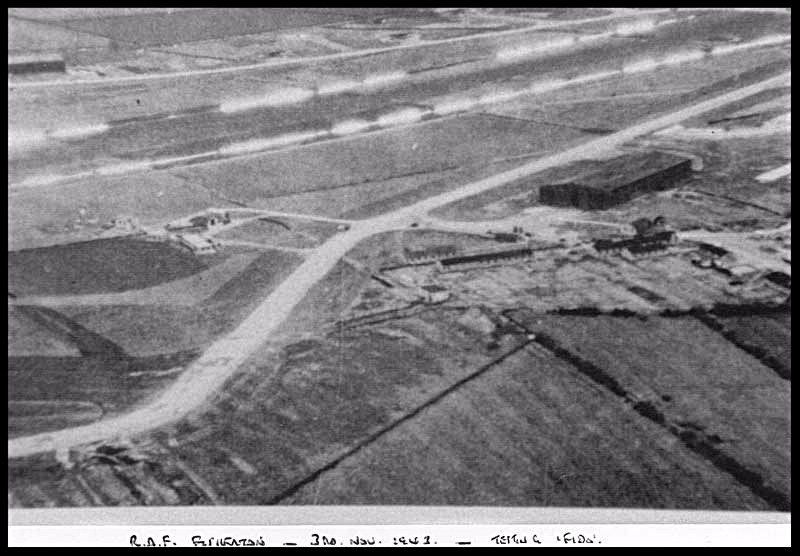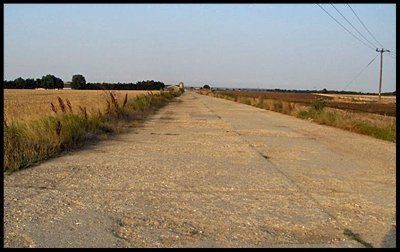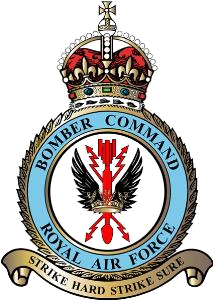RAF Fiskerton
Construction on the airfield at Fiskerton began life in early 1942, and opened in November the same year. Only 4.5 miles east of Lincoln, the airfield was constructed to Class A standard on the west side of Fiskerton Moor, south-east of the LNER line from Lincoln to Market Rasen. In order for the new station to be built, the road from Fiskerton village to Reepham had to be closed. Two of the main construction companies involved in building the airfield were F.G. Mintee Ltd and Constable Hart & Co. Ltd, both of which were only involved in the later stages of construction. But a number of smaller companies were also involved in the building process, mainly in the early stages.

Despite the station being completed in November 1942, it wasn’t to receive its first residents until 2nd January 1943 with the arrival of No.49 Squadron from RAF Scampton. With the arrival of its first squadron came the airfields first aircraft in the form of the Avro Lancaster. With the station now active, it was assigned to 5 Group, Bomber Command, and became a sub-station for 52 Base, with had established at near-by Scampton. No.49 Sqn’s stay was to be short lived though, and they were forced to leave the station due to the runway at the airfield starting to break up. So on the 13th September 1943 they left the station heading for nearby RAF Dunholme Lodge, but were later to return to the airfield on the 24th October 1943.


RAF Fiskerton
Reepham Rd, Lincoln LN3
The normal 36 hardstandings were provided, all of which were the standard pan type, but one was lost with the erection of a T2 hangar on the north side between runway heads 23 and 26. Another T2 and a B1 were erected near the technical site on the east side between runway heads 26 and 31, the B1 being the southernmost. The bomb stores were positioned to the north between runway heads 13 and 23. Most of the domestic sites were dispersed in fields close to the Fiskerton village to Stainfield road, comprising of seven domestic, two communal, one WAAF and sick quarters. Maximum accommodation was 2016 males and 297 females.

During this period of inactivity not only was the runway repaired, but they also took this opportunity to install the fog dispersal system called FIDO (Fog Investigation Dispersal Organisation). But the installation of this system initially caused a number of problems for pilots when landing. The up draught from the heat and the glare from the flames was impairing the pilots visibility when landing. One Lancaster landing there was said to have made several attempts to land before finally getting the aircraft down. But these early problems were soon overcome once the pilots got more accustomed to the conditions.
As at most airfields with the FIDO system installed, it was used as a last resort, due not only to the high cost of petrol, but also the amount of petrol the system used. On a single burn during December 1944, the system used a massive 188,000 gallons of petrol. At the time Fiskerton was one of only 15 airfields to receive this newly developed system. More activity was to take place at the station on the 2nd January 1944, the airfield became the home of 1514 Beam Approach Training Flight, bringing with them the Airspeed Oxford.
More change was to take place in October 1944, when 52 Base was transferred to 1 Group, Bomber Command on the 7th October; with this the station became a sub-station of 15 Base. However No.49 Sqn remained under the command of 5 Group, and subsequently left the airfield on the 16th October 1944. With this move, it left the station with only the resident BAT flight and a single detachment of No.141 Sqn which had arrived on the 4th September with its Mosquitos, as the only operating aircraft at the airfield. But they were soon joined by the first arrival from 1 Group, No.576 Squadron. They arrived on the 30th October, and only two days later, on the 1st November, they were joined by No.150 Squadron which was formed at the station. With the arrival of both squadrons brought an abundance of Avro Lancasters to the airfield.
During operations from the airfield, a total of 117 Lancaster's were lost from the two resident bomber squadrons.

A view of the runway today. (above)
RAF Fiskerton today. (below)
The information on RAF Fiskerton has been kindly provided by http://www.bcar.org.uk/fiskerton-history
and http://www.raffiskertonairfield.co.uk./
Please visit their website if you wish to learn more.

